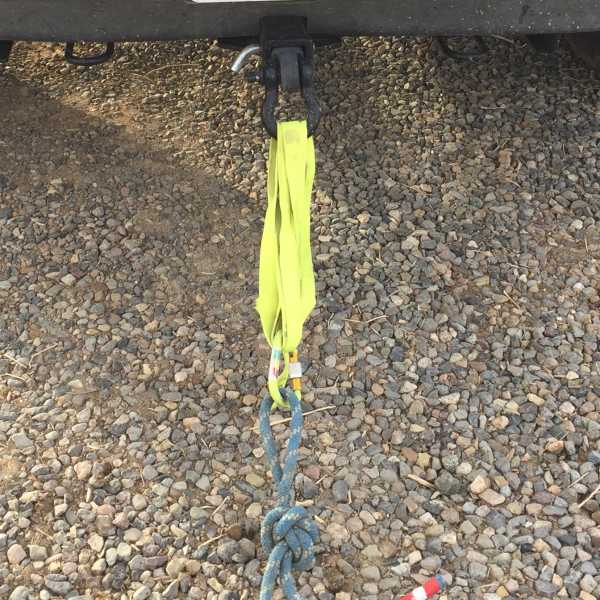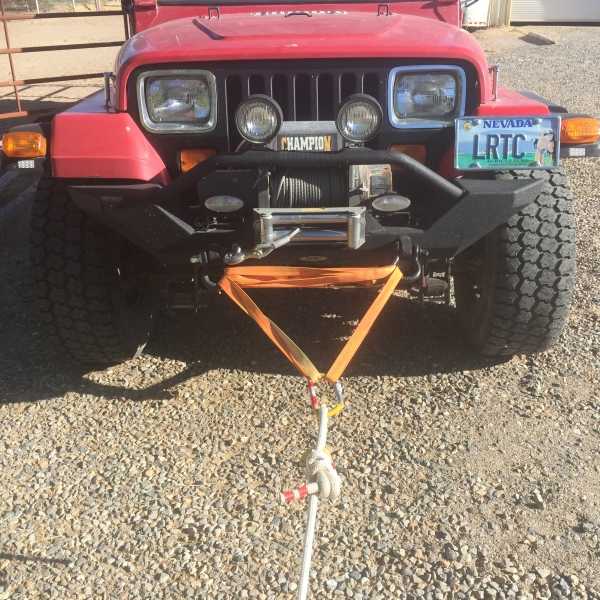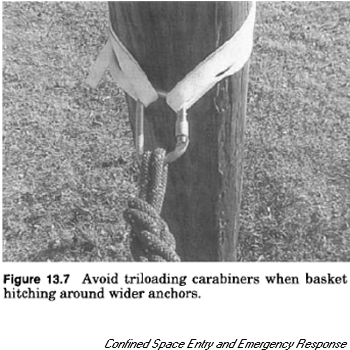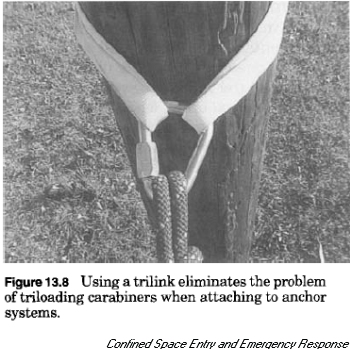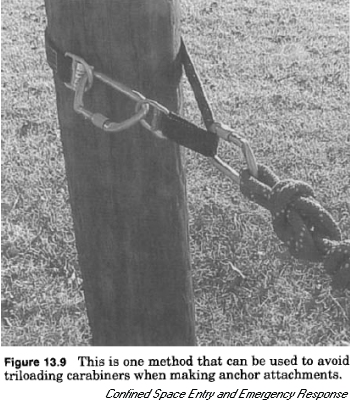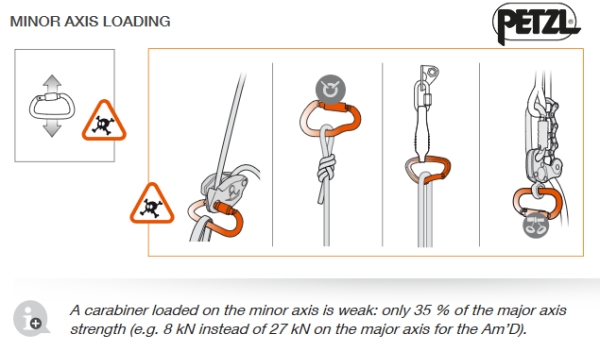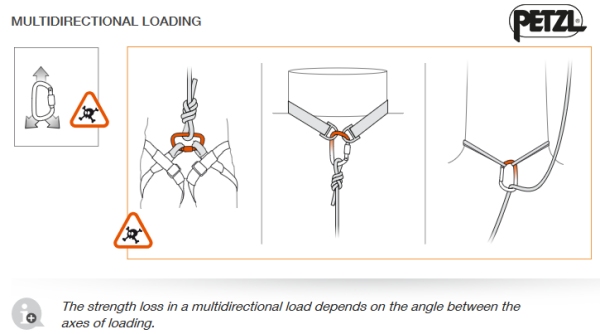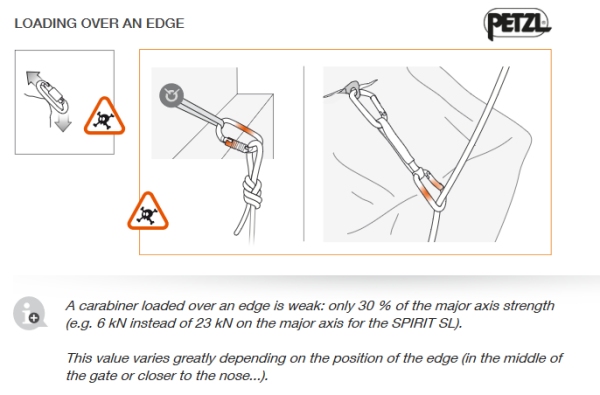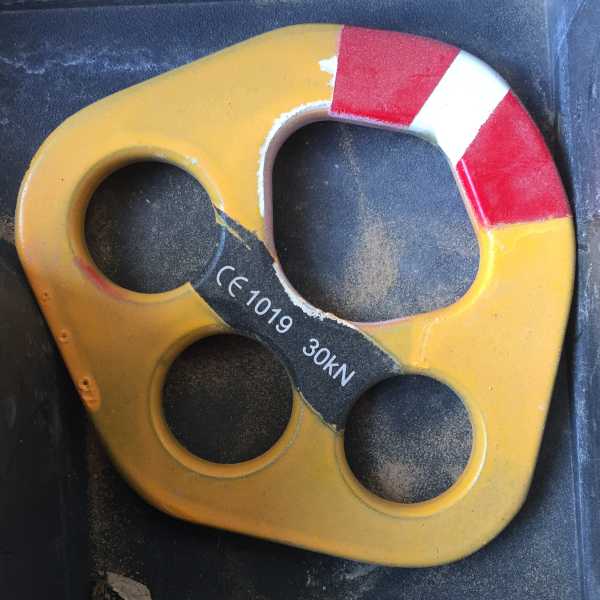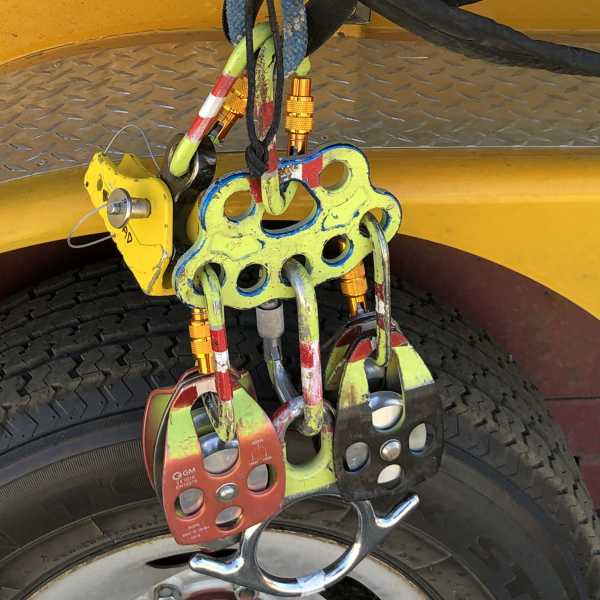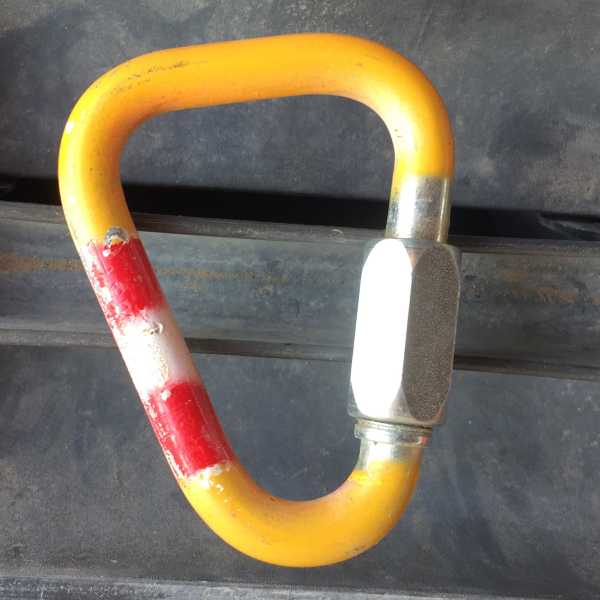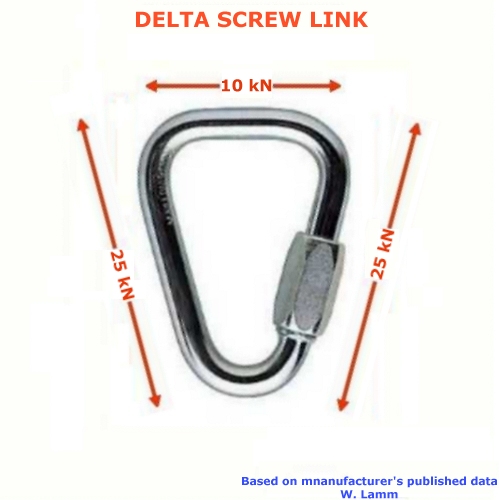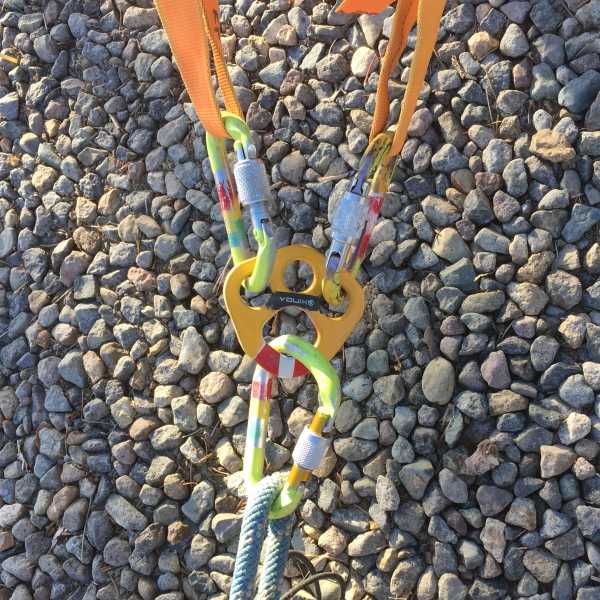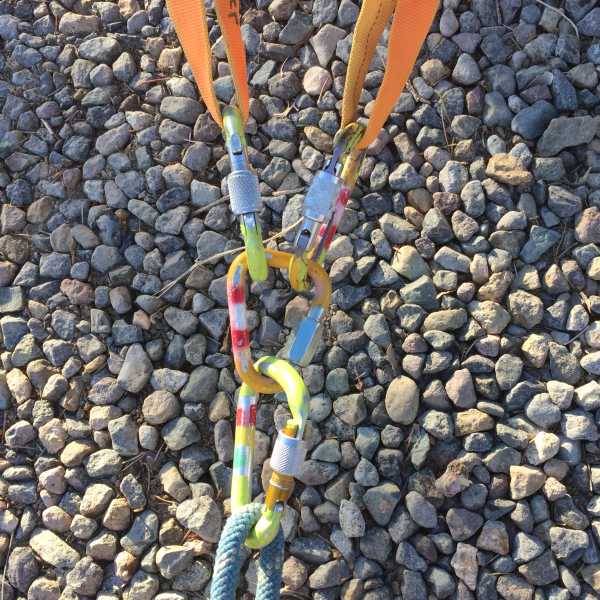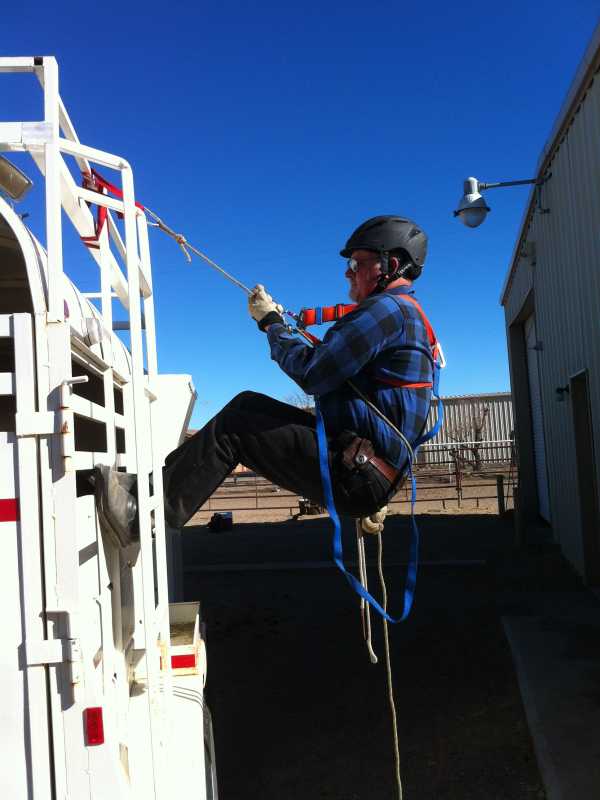
Whether lowering or raising a person or dragging a downed animal, carabiners are among the most common devices we use. When used properly, they are extremely safe and reliable. But as with any tool, it's important to understand their strengths and weaknesses.
One key point element involves carabiner axes. The major axis runs the length of the carabiner. The minor axis runs the width of the carabiner. Understanding the difference is important since how a carabiner is loaded can affect its strength.
Note in the example below that the strength along the major axis is 24 kN (about 5,400 Lbs.) while the strength along the minor axis is only 7 kN (about 1,575 Lbs.) Improper loading can significantly impact the 15:1 safety ratio for life line loads and 5:1 ratio for large animal loads.
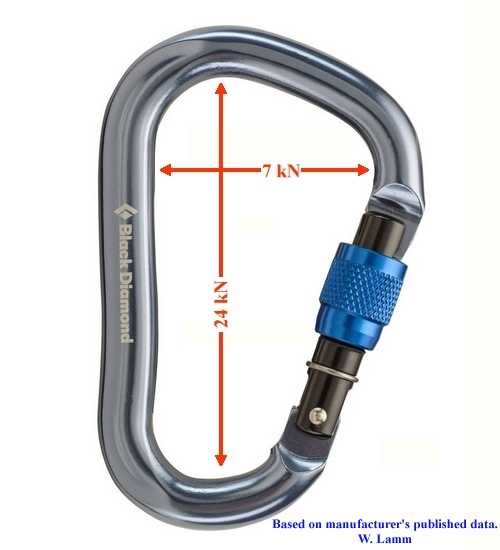
A carabiner will perform to its load rating when it is loaded directly on its major axis. Such loading may not always be practical, so it's important to understand the effects that offset loading may have when carabiners are placed under critical loads.
| 





